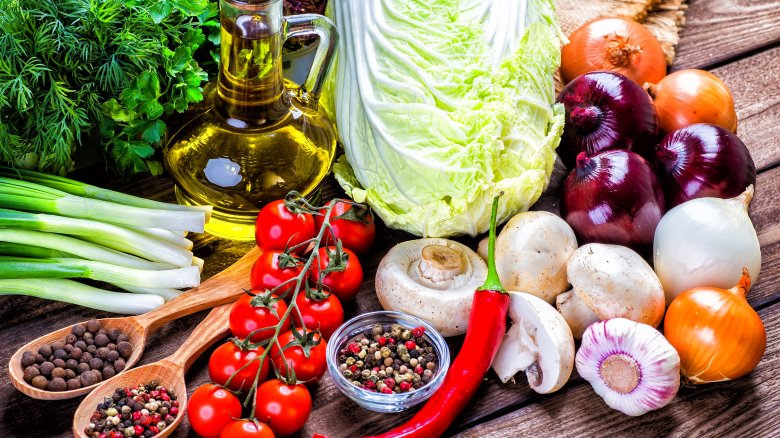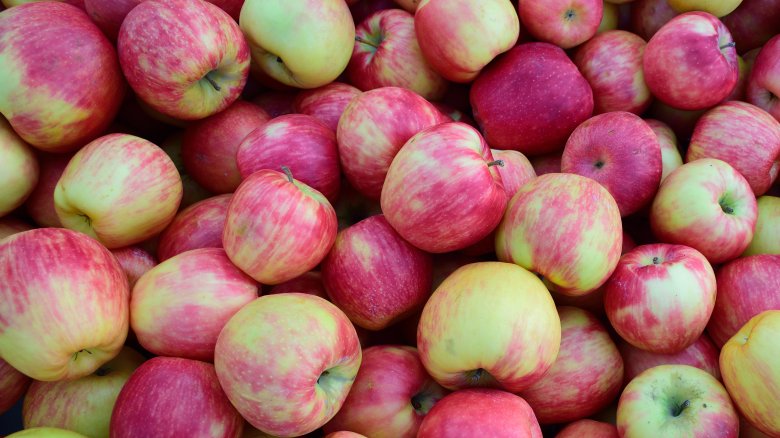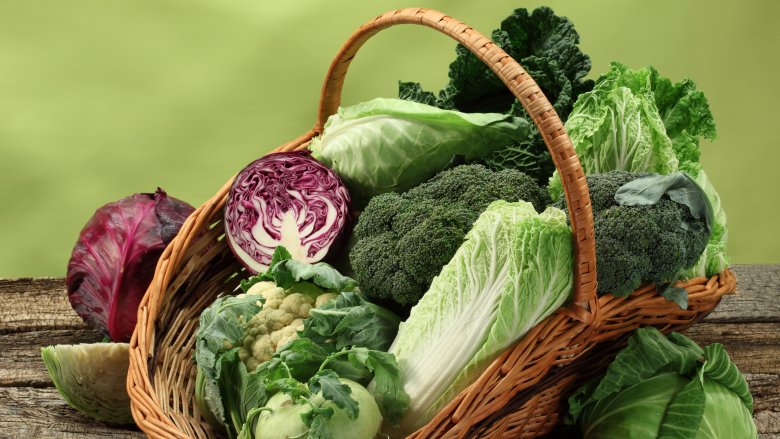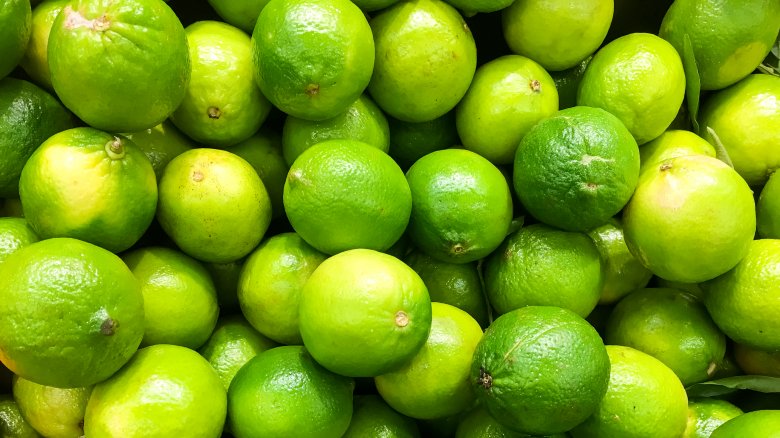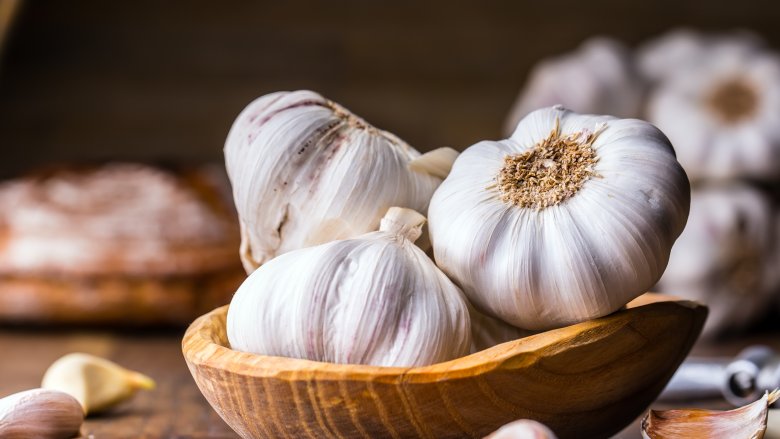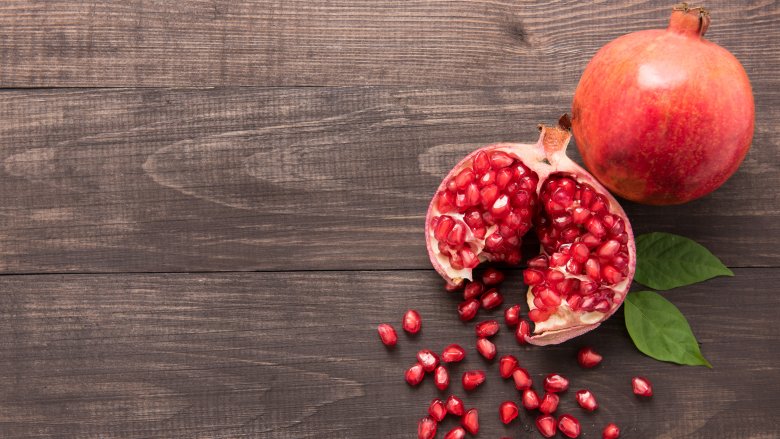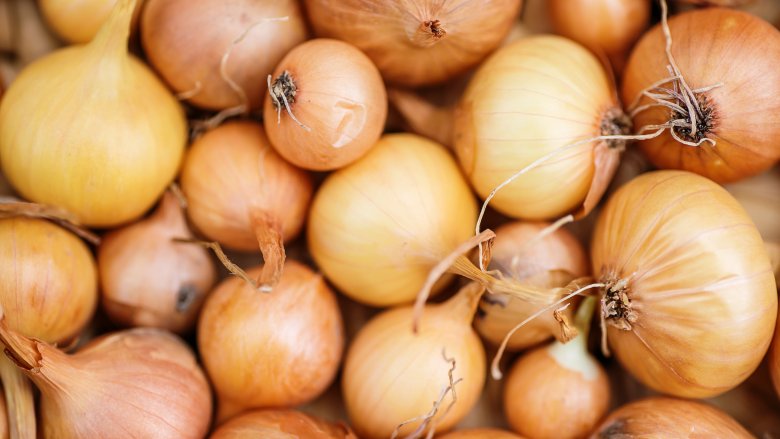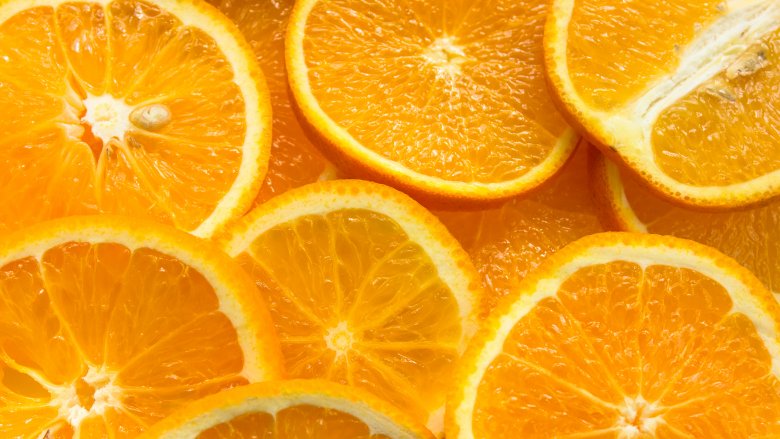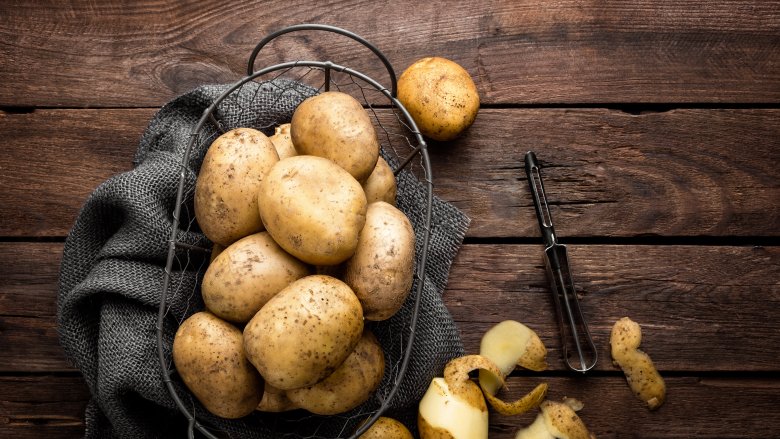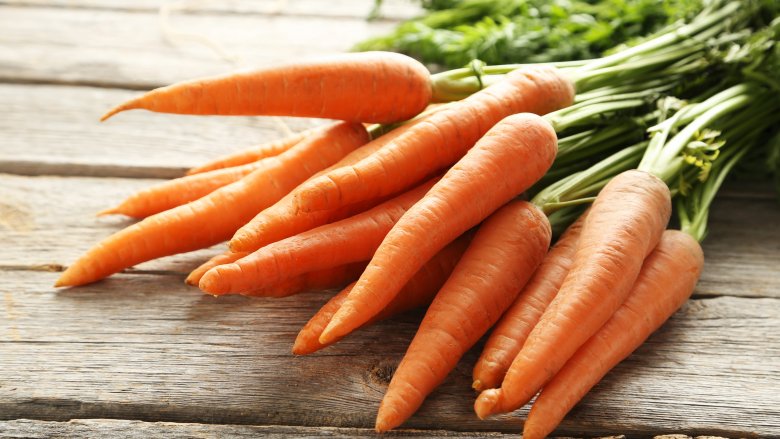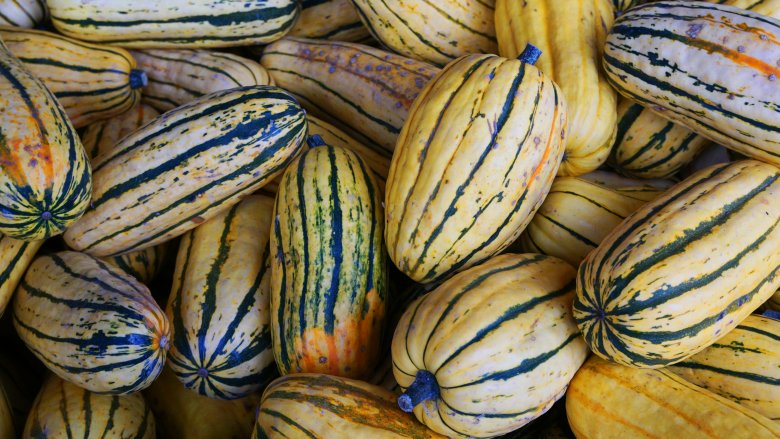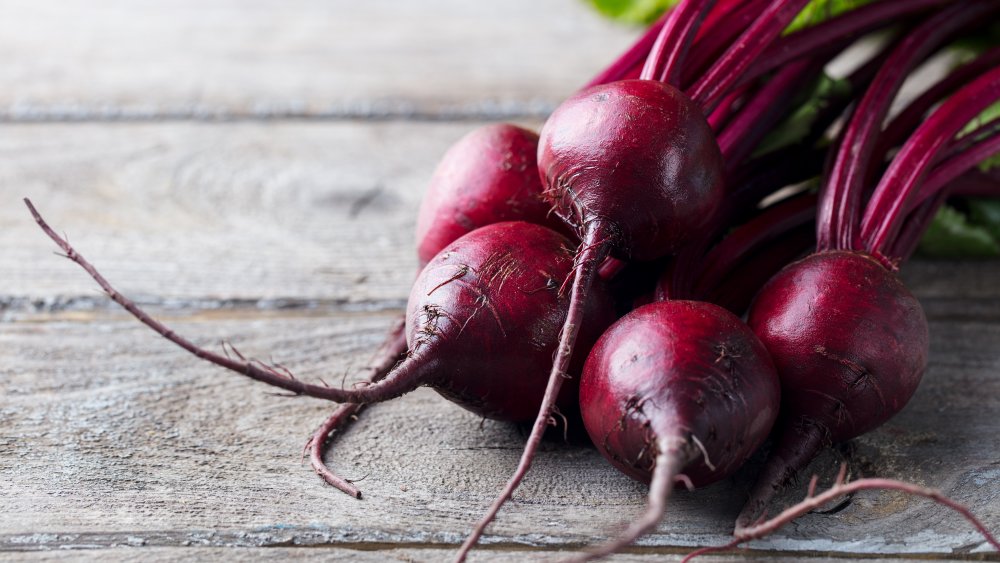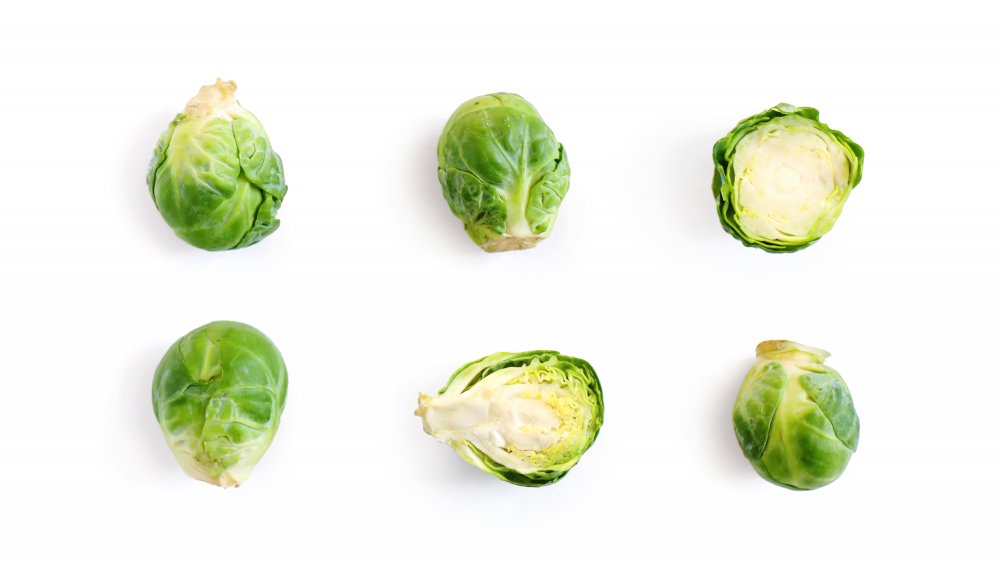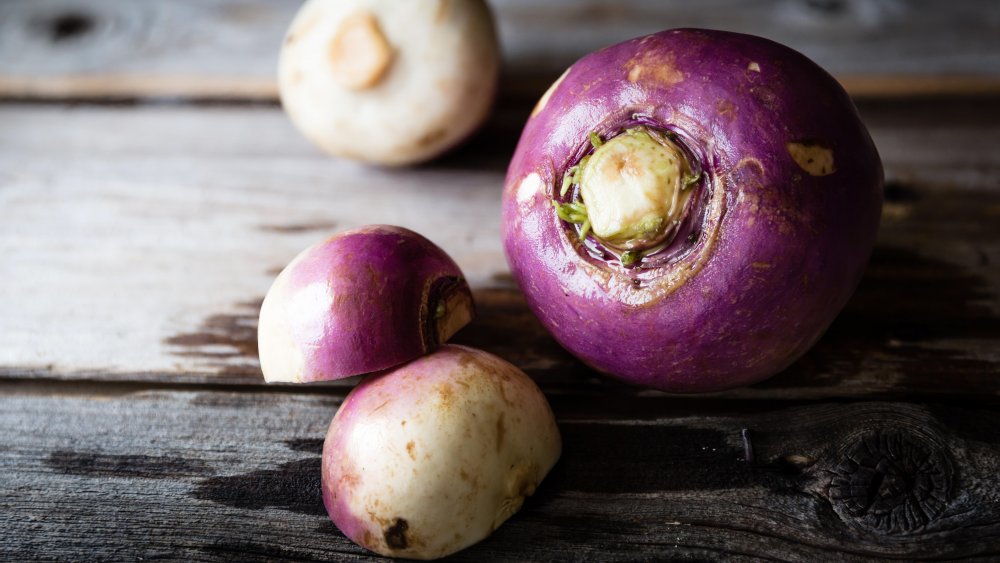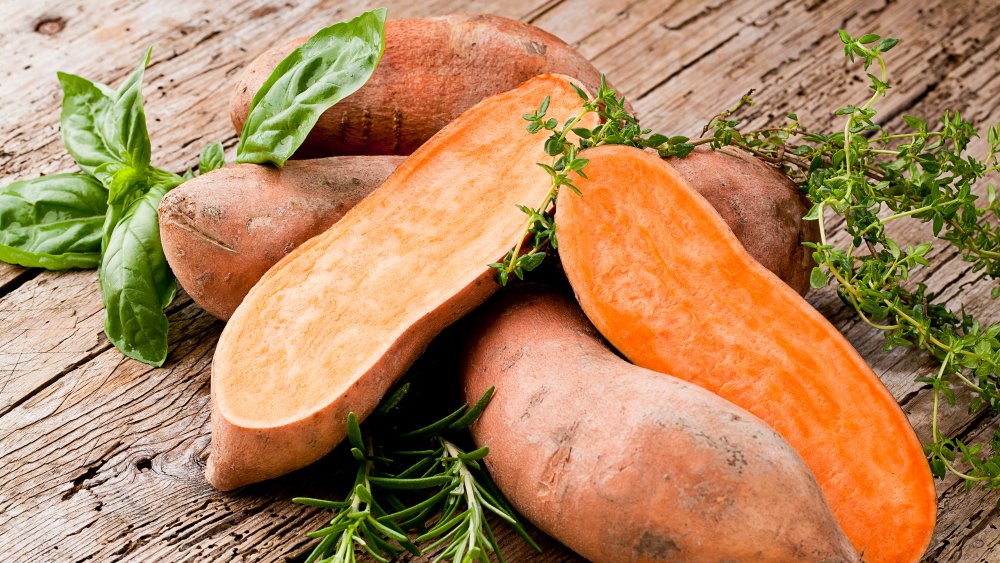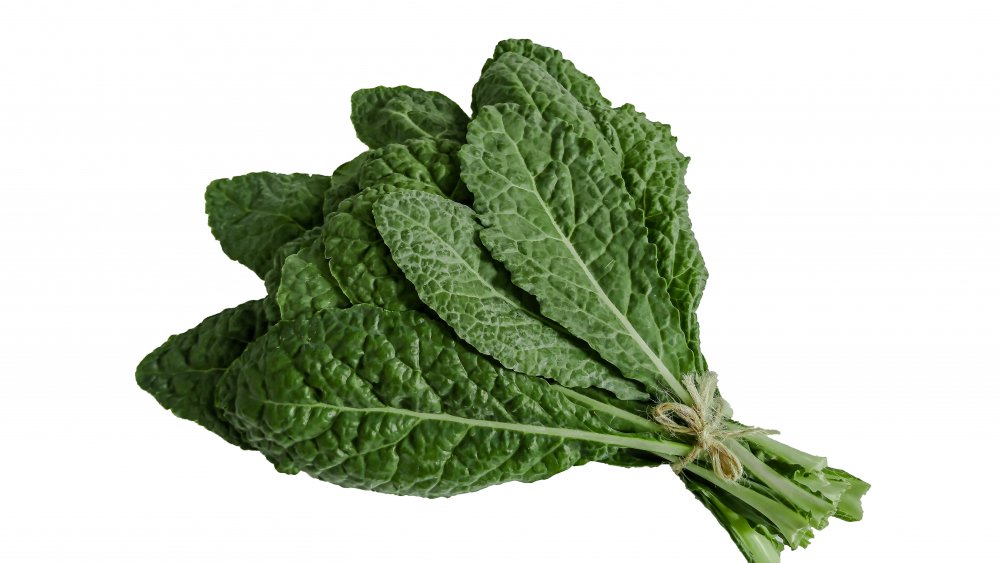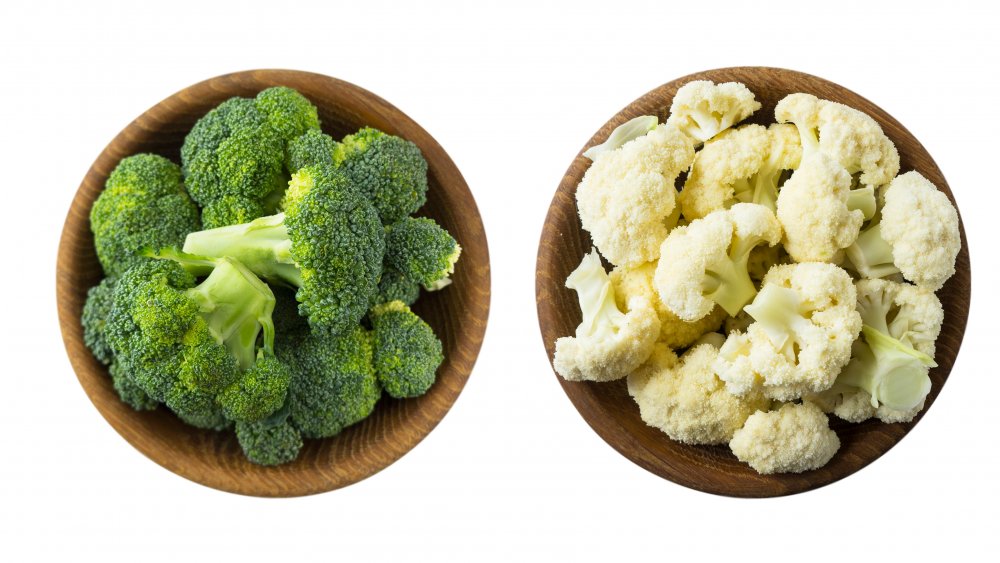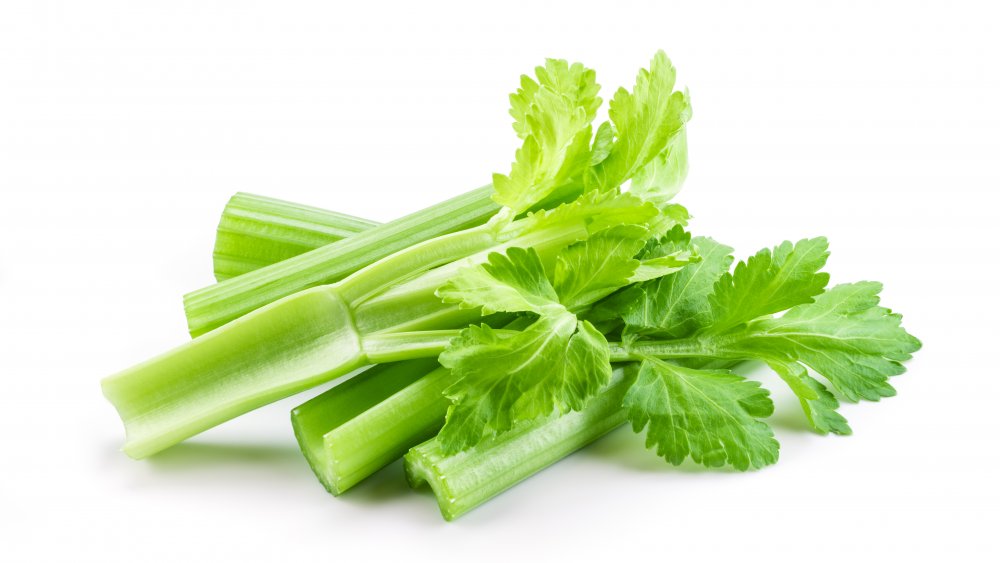Fruits And Vegetables That Last The Longest
We probably don't need to be the ones to remind you that nothing lasts forever. Nowhere does this become more apparent in our everyday lives, than it does in the kitchen. You'd be hard-pressed to find anything beyond your canned foods that's going to last longer than just a short while, and food going bad can be frustrating. It's basically throwing money down the drain, after all.
That doesn't necessarily have to be the case, though, and some things — even among perhaps the most perishable types of food (outside of dairy) — can, with a little TLC, last much longer than you would probably expect. Store them right and treat them well and these fruits and vegetables can last weeks, months, or maybe even more.
These are the fruits and vegetables that last the longest.
Apples
You might have noticed that apples don't tend to go bad too quickly. Even if you leave them out, fresh apples can last up to four weeks in the pantry. If you keep them in the fridge, however, they'll last a whole lot longer — refrigerated apples can last up to two months. Either way, if the skin appears wrinkled and the insides are soft, your apple has gone bad. Chuck it.
Cabbage
Cabbage is one of the more helpful vegetables out there, in that it's not only versatile but also tends to have a significant shelf-life. There are a few golden rules to follow to ensure your cabbage is stored correctly: Don't wash it until you're ready to use it, handle it with care — bruising is going to seriously shorten the life of the cabbage — and try to keep it in a hydrator drawer if you can.
Follow those rules and the cabbage can last anywhere up to two months. If you keep it (or any other root vegetables on this list) in a root cellar in optimum conditions, it's going to last much, much longer, although that might be a little too much effort if you're not a seasoned grower and gardener.
Citrus fruits
Your smaller citrus fruits, such as lemons and limes, tend to last a fair amount of time (usually a couple of weeks) on the counter. Once again, if you keep them in the fridge, that's bound to go up to a couple of months. Make sure to keep them in the fridge drawer, and don't keep them in plastic bags or containers, since they'll end up going moldy quicker that way.
Just make sure to use them up once you've cut into them — in the fridge, they'll have spoiled in a few days, and unrefrigerated they're not likely to last to the end of the day. You'll be able to tell if a lemon or lime has gone bad if they're soft or discolored. Once you spot actual mold, the game's up.
Garlic
Helpfully, garlic is one of the longest-lasting vegetables out there. If you leave a bulb uncut, it'll probably last up to half a year before starting to go bad, and even the separated cloves will last a month or two. Once you chop it, you've probably got a week before it spoils. If you're looking to keep your garlic good, store it in a dark, dry space where it can get some air. Keeping it in a paper bag out in your kitchen should do just fine. If it's chopped, keep it in a container in the fridge.
Once you can see brown spots appearing on the cloves, or if they're turning yellow, then your garlic is going bad. If new sprouts are appearing on the garlic bulb (they're green and will appear in the center of the bulb), however, you can still get some use out of them by planting and growing some of your own.
Pomegranates
The shelf-life of pomegranates depends entirely on whether you've got the whole fruit or just the seeds in your kitchen. The latter is only likely to last about a week — unless you freeze them, which can be done without spoiling them if you keep them in a container — while the former will keep for up to three weeks in the fridge. To keep pomegranate seeds edible outside the freezer, stick them in the fridge in an airtight container, though avoid plastic — they're more than capable of soaking up the chemicals that are found in most plastics.
If your pomegranate is browning, or if it's soft or brittle to the touch, then it's gone bad. With the seeds, you'll be able to tell they've gone bad if they're beginning to turn brown. If they look like you shouldn't eat them, you probably shouldn't.
Onions
Like many root vegetables, onions have a fairly hefty shelf-life. On the counter, they'll last over a month, and up to six weeks in the right conditions: in a dark, dry place with good air circulation. Once again, in a paper or mesh bag out on the counter will keep them good. If you keep them in the fridge, however, they should have another couple of weeks added on to their lives, and they'll last for up to eight months in the freezer.
Once they're removed from their skins, they'll spoil much more quickly, so keep the peeled ones in a container in the fridge. In that case, they'll probably last a week or so. Bad onions tend to be brown, or black if they've been left out for a particularly long time. Once they go soft, too, they're done.
Oranges
Oranges tend to last around the same amount of time as their smaller cousins, such as lemons or limes. Fresh oranges will keep for two or three weeks out in the kitchen. Keep them in the fridge, however — preferably in the fruit drawer — and they'll stay good for up to two months.
If you've cut into it, the orange will only last a day or so without spoiling, or a couple of days at most in the fridge. Keep an eye out for moist spots, white mold and discoloration in your oranges, since that's how you'll know they need to be trashed. As with any other fruit or vegetable, simply use your best judgement and try not to eat anything you wouldn't give somebody else.
Potatoes
All we'll say is this — we're thankful for root vegetables. Like the others, potatoes have an admirable lifespan, though just how far they'll go depends slightly on what sort of potato you're looking at. Generally, though, you can expect potatoes to last anywhere from two to five weeks in the pantry, or anywhere up to four months in the fridge. If you're storing them in the pantry, make sure to keep them away from warmer temperatures. If they've been prepared, keep them in a container or they'll go bad fast.
You can freeze certain types of potato, too, including french fries, cooked or baked potatoes and mashed potatoes. In that case, they'll probably last anywhere up to eight months. After that, you're on your own. We won't ask why you're keeping your potatoes for over half a year.
Carrots
The length of a carrot's life depends largely on what state it's in. Whole, fresh carrots tend to last around four or five weeks, while the baby versions won't make it any longer than four. Once a carrot is cooked, however, it's unlikely to last beyond the end of the week. It's possible to freeze carrots too, but make sure to blanch them before you do.
As with most vegetables, be sure to store them in the fridge, un-peeled, in either a plastic bag or the veg drawer. If you're able to spot white dots on your carrots, don't fret — they're just drying out and should be alright to eat as long as you don't wait too long. Once they're soft and mushy (or worse) they're done. Get rid of them, ASAP.
Squash
Squash, being another root vegetable, naturally tends to have quite a formidable shelf-life. If it's fresh and whole, squash (be it winter, spaghetti or butternut) will last anywhere from a month up to three months, regardless of whether you refrigerate them or not, though doing so might cause your squash to change slightly in taste and texture, so it's probably best to keep it on the counter.
If it's cooked, however, don't expect it to stay unspoiled for more than a few days. In the freezer, squash will keep for up to eight months. Try to store them in a cool, dark place and take note if it's starting to get soft or leaking — once that's happened (or if you notice mold) it's time to throw it out.
Beets
If you couldn't find a good reason to eat beets before, now you have one: They last a long time when stored properly in the refrigerator. They will start to get soft pretty quickly if you leave the green tops intact, so be sure to remove those as soon as you get home from the grocery store. The tops are edible, but they're only good for a few days. The roots, on the other hand, will maintain their firmness from one to three months if you place them in a plastic bag and put them in a high-humidity crisper drawer. Don't wash them first; that will add moisture to the bag and speed up spoilage.
From there, there are tons of ways to enjoy beets for months on end. Peel and shred the roots and eat them raw in salads and coleslaw. Better yet, roast them in the oven to soften their texture and coax out their sweet flavor. If you need to extend their life even further, don't be afraid to make pickled beets.
Brussels sprouts
Brussels sprouts are one of those vegetables that have gotten a bad rap over the years. So many of us grew up with boiled-to-death Brussels sprouts that tasted sulfury and mushy. Luckily, Brussels sprouts have gotten a makeover in the last few years, and it's surprisingly easy to roast or fry them so they're crispy and wonderful. But first, you have to store them correctly to extend their shelf life beyond a week.
Brussels sprouts will last longer the colder they're stored. At storage temperatures close to 32 degrees Fahrenheit, they can last as long as five weeks. Considering that most of us don't have a root cellar, it's safe to assume your Brussels sprouts can live for up to two weeks. It's best to put them in a clean plastic bag and keep them in the crisper drawer. If they happened to come on the stalk, leave them on and only pick off the ones you plan to eat. You'll want to keep them as dry as possible, too, so refrain from washing them until you're ready to cook.
Rutabaga
You might have seen rutabagas (also called swede) at the grocery store and never pulled the trigger on purchasing this strange vegetable. They're a member of the Brassica family (like broccoli and cauliflower), and they're actually a hybrid cross between turnips and cabbage. They have a sweet, potato-like flavor, so feel free to use them as a potato substitute for dishes like mashed rutabaga, shepherd's pie, soups, or stews.
Another good reason to give rutabaga a chance is its shelf life. When stored in a high-humidity crisper bin in the refrigerator, these roots can last for up to four months. They have the best chance at lasting a long time if you store them in a clean plastic bag, and be sure to keep them as dry as possible. Don't peel them ahead of time, either. The skin provides moisture protection for the flesh inside, and peeling them in advance will cause them to dry out.
Sweet potatoes and yams
Believe it or not, there is a big difference between sweet potatoes and yams. For starters, yams are closely related to lilies and grasses, while sweet potatoes are in the morning glory family. In case you were wondering, neither is technically a potato, which is part of the nightshade family. But, the U.S. Food and Drug Administration (FDA) doesn't regulate food labeling for sweet potatoes and yams, so you may not know which you're buying at the grocery store.
Luckily, they both store the same, so it doesn't matter which one you bring home. When it comes to maximizing storage of sweet potatoes and yams, you'll want to keep them out of the refrigerator. They do well in a cool, dark place, and storing them in brown paper bags can optimize storage time. It's also best to keep them away from other vegetables. Onions in particular are a bad storage companion, as they release gases that can cause the sweet potatoes to sprout and rot. If you do everything right, your sweet potatoes and yams can last as long as four to six months.
Kale
Believe it or not, before kale became a superfood in 2012, the biggest buyers of this cruciferous vegetable didn't serve it in their meals. It was used as decoration to line salad bars and food displays! Today, kale is as trendy as it gets, and it's used as a secret ingredient in tons of recipes from pesto to cake. If you're addicted to adding kale to your morning smoothie, don't fret. It can last longer in the refrigerator than you'd think.
The biggest problem with storing greens for long periods of time is that they can go limp. To keep your kale crisp and fresh, make sure to keep the leaves dry. That means saving the washing part for just before you use them. Place the unwashed leaves in a large container and cover them with a damp paper towel. Store the covered container in the coldest part of the refrigerator and change out the paper towel every few days to keep the leaves hydrated. The kale should be in good shape for up to two weeks.
Broccoli and cauliflower
There are already a lot of Brassica vegetables on this list, and we're about to add two more: Broccoli and cauliflower. These cruciferous vegetables are fairly hearty, but they require specific storage procedures to keep them at their peak for weeks. For cauliflower, it's best to remove any excess leaves and wrap unwashed cauliflower in a damp paper towel. Then, place it in a perforated plastic bag and keep it in the crisper drawer for up to four weeks.
Broccoli tends to wilt more quickly than cauliflower and generally lasts a week after you bring it home from the grocery store. Jerry James Stone suggested an innovative way of extending broccoli's shelf life. Start by trimming off the bottom quarter inch from the stem and place the cut stem in a mason jar with about an inch of water. The idea is that broccoli is the flowering part of the plant, so you should store it in water like a flower. In the refrigerator in this state, broccoli can last a few weeks.
Celery
Whether you're using it to make celery juice or you're adding it to broths, soups, stews, or casseroles, celery is a staple cooking ingredient. While you might not enjoy celery's bland, watery flavor and crisp texture on its own, it's an essential component of mirepoix, the flavor base for most French recipes. Combined with onions and carrots, celery can add a ton of flavor and depth to your cooking.
So how do you keep it from getting sad and limp in the refrigerator? Wrap it in aluminum foil! It might sound like an odd way to store a vegetable, but celery produces ethylene gas, which speeds up ripening. When that gas is trapped inside a plastic bag with celery, it speeds up spoilage. Wrap it in foil, though, and you'll keep the moisture inside while letting the gas out. You can reuse the foil several times if you're worried about creating waste.
